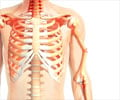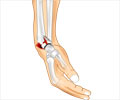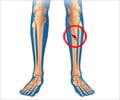Risk factors which may help orthopedic surgeons better predict fracture nonunion, a serious complication of bone fractures, have been identified by researchers.

‘Risk factors which may help orthopedic surgeons better predict fracture nonunion, a serious complication of bone fractures, have been identified.’





To better understand the risk factors that contribute to the failure of fractured bones to heal, a national team of orthopedic surgeons examined health records from 90.1 million patients. Their goal was to describe the epidemiology of fracture nonunion in adults using the information available to physicians at patient presentation. They focused on patients 18-63 years old, representing 6,725 patients with 309,330 fractures. They researched risk factors likely to be of general concern to orthopedic surgeons and pooled data to identify 45 variables of interest. The researchers found a nonunion rate of 4.93% overall with substantial variation from bone to bone.
The lowest nonunion bone rates were in metacarpal at 1.47% and radius at 2.10%. The highest nonunion rates were in scaphoid at 15.46%, tibia+fibula at 13.95%, and femur at 13.86%. The presence of other diseases boosted risk.
Osteoarthritis, rheumatoid arthritis, and diabetes increased the odds of nonunion by at least 40%. Use of certain medications such as analgesics also upped risk. Other medications were protective. Antidiabetic medications, other than insulin, and oral contraceptives are inversely associated with nonunion.
Nonunion odds were significantly increased by many risk factors including the number of fractures, use of prescription analgesics (NSAIDs+opioids), operative treatment, open fracture, anticoagulant use, osteoarthritis with or without rheumatoid arthritis, anticonvulsant use with or without benzodiazepine, opioid use, diabetes, high-energy injury, osteoporosis, male gender, insulin use, smoking, obesity, antibiotic use, Vitamin D deficiency, diuretic use and kidney insufficiency.
Advertisement
"Understanding key risk factors and their interplay will help us determine which fractures are at greatest risk of nonunion," concludes Dr. Robert Zura, Professor and Head of Orthopedics at LSU Health New Orleans. "We can alter our approach to those and modify those risk factors we can, such as prescription medicines, to improve healing."
Advertisement















